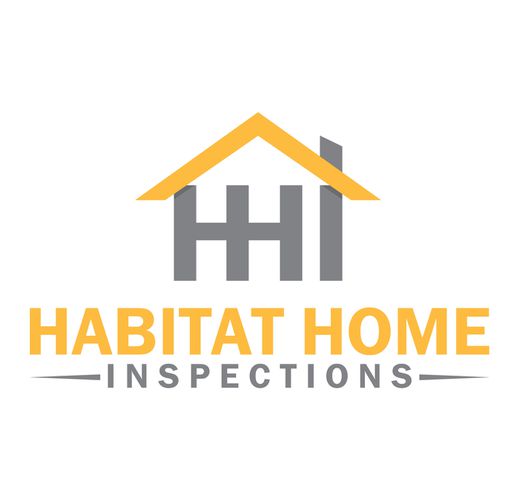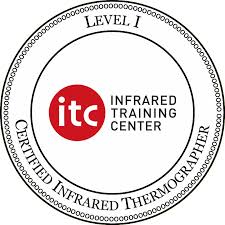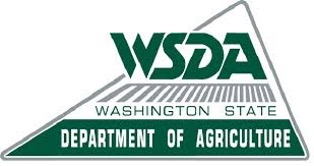The Scope and Purpose of a Home Inspection
Purchasing property involves risk
The purpose of a home inspection is to help reduce the risk associated with the purchase of a structure by providing a professional opinion about the overall condition of the structure. A home inspection is a limited visual inspection and it cannot eliminate this risk. Some homes present more risks than others. We cannot control this, but we try to help educate you about what we don’t know during the inspection process. This is more difficult to convey in a report and one of many reasons why we recommend that you attend the inspection.
A home inspection is not an insurance policy
This report does not substitute for or serve as a warranty or guarantee of any kind. Home warranties can be purchased separately from insuring firms that provide this service.
A home inspection is visual and not destructive
The descriptions and observations in this report are based on a visual inspection of the structure. We inspect the aspects of the structure that can be viewed without dismantling, damaging or disfiguring the structure and without moving furniture and interior furnishings. Areas that are concealed, hidden or inaccessible to view are not covered by this inspection. Some systems cannot be tested during this inspection as testing risks damaging the building. For example, overflow drains on bathtubs are generally not tested because if they were found to be leaking they could damage the finishes below. Our procedures involve non-invasive investigation and non-destructive testing which will limit the scope of the inspection.
This is not an inspection for code compliance
This inspection and report are not intended for city / local code compliance. During the construction process structures are inspected for code compliance by municipal inspectors. Framing is open at this time and conditions can be fully viewed. Framing is not open during inspections of finished homes, and this limits the inspection. All houses fall out of code compliance shortly after they are built, as the codes continually change. National codes are augmented at least every three years for all of the varying disciplines. Municipalities can choose to adopt and phase in sections of the codes on their own timetables. There are generally no requirements to bring older homes into compliance unless substantial renovation is being done.
This is just our opinion
Construction techniques and standards vary. There is no one way to build a house or install a system in a house. The observations in this report are the opinions of the home inspector. Other inspectors and contractors are likely to have some differing opinions. You are welcome to seek opinions from other professionals.
The scope of this inspection
This inspection will include the following systems: exterior, roof, structure, drainage, foundation, attic, interior, plumbing, electrical and heating. The evaluation will be based on limited observations that are primarily visual and non-invasive. This inspection and report are not intended to be technically exhaustive.
Your expectations
The overall goal of a home inspection is to help ensure that your expectations are appropriate with the house you are proposing to buy. To this end we assist with discovery by showing and documenting observations during the home inspection. This should not be mistaken for a technically exhaustive inspection designed to uncover every defect with a building. Such inspections are available but they are generally cost-prohibitive to most homebuyers.
Your participation is requested
Your presence is requested during this inspection. A written report will not substitute for all the possible information that can be conveyed verbally by a shared visual observation of the conditions of the property.
How to Read This Report
Getting the Information to You
This report is designed to deliver important and technical information in a way that is easy for anyone to access and understand. If you are in a hurry, you can take a quick look at our "Summary Page” and quickly get critical information for important decision making. However, we strongly recommend that you take the time to read the full Report, which includes digital photographs, captions, diagrams, descriptions, videos and hot links to additional information.
The best way to get the layers of information that are presented in this report is to read your report online, which will allow you to expand your learning about your house. You will notice some words or series of words highlighted in blue and underlined – clicking on these will provide you with a link to additional information.
This report can also be printed on paper or to a PDF document.
Chapters and Sections
This report is divided into chapters that parcel the home into logical inspection components. Each chapter is broken into sections that relate to a specific system or component of the home. You can navigate between chapters with the click of a button on the left side margin.
Most sections will contain some descriptive information done in black font. Observation narrative, done in colored boxes, will be included if a system or component is found to be significantly deficient in some way or if we wish to provide helpful additional information about the system or the scope of our inspection. If a system or component of the home was deemed to be in satisfactory or serviceable condition, there may be no narrative observation comments in that section and it may simply say “tested,” or “inspected.”
Observation Labels
All narrative observations are colored, numbered and labeled to help you find, refer to, and understand the severity of the observation. Observation colors and labels used in this report are:
- Major Concern:Repair items that may cost significant money to correct now or in the near future, or items that require immediate attention to prevent additional damage or eliminate safety hazards.
- Repair:Repair and maintenance items noted during inspection. Please note that some repair items can be expensive to correct such as re-finishing hardwood floors, but are considered simply repair items due to their cosmetic nature.
- Recommended Maintenance:These are repair items that should be considered "routine home ownership items," such as servicing the furnace, cleaning the gutters or changing the air filters in the furnace.
- Improve:Observations that are not necessarily defects, but which could be improved for safety, efficiency, or reliability reasons.
- Monitor:Items that should be watched to see if correction may be needed in the future.
- Due Diligence:Observation such as a buried oil tank that may require further investigation to determine the severity and / or urgency of repair.
- Future Project:A repair that may be deferred for some time but should be on the radar for repair or replacement in the near future.
- Efficiency:Denotes observations that are needed to make the home more energy efficient as well as to bring the home up to modern insulation standards. This category typically includes windows and insulation. Other items, such as lighting and appliances, are not inspected for their energy status.
- Completed:Items that were initially an issue but have since been completed.
- Note:Refers to aside information and /or any comments elaborating on descriptions of systems in the home or limitations to the home inspection.
- Description:Detailed description of various aspects of the property noted during the inspection.
Pest Inspection
All items with the bug logo () are part of a structural pest inspection. If your inspector included a structural pest inspection as a part of the scope of your home inspection, you can distinguish pest inspection items by this logo. You can also go to the pest inspection summary page to see a summary of the items that are part of a pest inspection.
Summary Page
The Summary Page is designed as a bulleted overview of all the observations noted during inspection. This helpful overview is not a substitution for reading the entire inspection report. The entire report must be read to get a complete understanding of this inspection report as the Summary Page does not include photographs or photo captions.
Moisture Meter Testing
Where moisture meter testing is indicated in this report aFlir MR 40 or Electrophysics CT-100 was used.
Summary
Repairs
- G-1 Grounds:
Mortar is failing in the flagstone and/or tile patio. Recommend further evaluation and repair or replace as needed.
- RA-7 Roof/Attic:
The insulated glass units for the bonus room skylights (2) have failed, meaning there is visible moisture and condensation trapped between the panes of glass. Though this does not significantly impact the performance (other than a reduced thermal efficiency effect of the glass unit), it is primarily a cosmetic defect, the cloudiness cannot be cleaned. This will require glass replacement to correct. Hire a glass replacement company to further evaluate the skylights and replace all glazing with lost seals.
- EG-6 Exterior/Garage:
The main overhead garage door failed to close when testing and requires repair. The door appears to be binding with the automatic opener and the door is not closing consistently. Have this door serviced and repaired as recommended by a qualified garage door specialist.
- E-4 Electrical:
The main electric panel in the west garage, had a could of wires that are not terminated, and had not wire nuts to protect them. Recommend a licensed electrician further evaluate and repair (e.g. cap off wires and secure).
- E-5 Electrical:
While on site have a licensed electrician evaluate the electrical sub panel. There appeared to be a AFCI circuit that was over fused. The MBR AFCI circuit appeared to be drawing more current than what a 15amp circuit should be drawing. Basically, this means that whatever is connected on this circuit (appliances, in floor heat, etc.) is near or above the 15amp circuit breaker and wiring capabilities (#14 gauge).
- E-9 Electrical:
The GFCI protected receptacle in the bonus room wet bar did not respond to testing and may be defective - it did not trip when tested. Have this receptacle repaired or replaced as needed.
- P-9 Plumbing:
An active leak was found at the water heater. This Water Heater needs to be replaced as soon as possible to prevent damage to the home. Hire a licensed plumber to replace this water heater as soon as possible.
- P-11 Plumbing:
The discharge tube relief valve for the Water Heater appears to be leaking, a small drip leak was noted. Sometimes this can be fixed by blowing off the discharge tube but this is risky as it can get stuck open and necessitate replacement - as such I do not try and repair this during inspection. Have this leaking TPR valve repaired as needed by a licensed plumber.
- LAP-10 Laundry and Additional Plumbing:
Water storage tank was missing at time of the inspection. Recommend installing, and testing prior to closing.
- HCFV-1 Heating, Cooling, Fireplaces and Ventilation:
Annual servicing is recommended for safe and reliable performance from this water heating radiant floor system. Records indicate that this boiler has not been serviced in the last year. The boiler was tested during inspection and was operational. Hire a licensed heating contractor to service and further evaluate the boiler. Examples of observations noted during inspection include:
- Active leak noted at water heater system.
- Appears to be the original unit from 2005, which is near or at end of its useful life
- The taco controller is rusting.
- P-Trap dirty for condensate, needs cleaning
- HCFV-2 Heating, Cooling, Fireplaces and Ventilation:
The hot water heating system here appears to be set up as an open loop system - this means you have one hot water heating appliance serving both the heating system and domestic hot water supply and that the same water is shared between these two systems. It is important that there be a timer to flush the heating pipes daily in an open loop system to prevent stagnant water from building up in the heating pipes that could be flushed into the domestic water supply. This can be potentially problematic if the pump stops performing as there is a danger of Legionella developing in the pipes - this is the bacteria that causes Legionnaires' disease. There is also evidence that open loop systems can be more corrosive and problematic than closed loop systems. During servicing of this heating system, I recommend consulting with a qualified heating contractor about options and potential costs to turn this system into a closed loop system.
- HCFV-10 Heating, Cooling, Fireplaces and Ventilation:
The outdoor gas fireplace was shut off at the time of inspection. I do not like to light these when they are shut off as I do not know why they were shut off and there could be a safety reason. I recommend having this gas fireplace cleaned and serviced by a qualified contractor and made operable as needed.
- K-9 Kitchen:
Water was noted to be backing up out of the air gap when the main dishwasher was draining. This is not the intended function of this device and it could cause water damage on the countertop and around the sink. Hire a licensed plumber to repair ASAP to prevent water damage.
- CS-6 Crawl Space:
The sub-floor insulation in the crawl space has been damaged by rodents - this was pretty minor, just a few loose and damaged bits. Remove all rodent contaminated insulation and re-insulate. This work should be done in conjunction with other rodent remediation measures. Once clean-up is complete, I would set and monitor some traps to see if additional exclusion work is needed.
Due Diligences
- RA-5 Roof/Attic:
The NFPA (National Fire Protection Association) recommends an annual inspection of all chimneys, fireplaces, solid fuel-burning appliances, and vents. They also recommend an NFPA 211 Standard, Level II inspection upon sale or transfer of the property. A Level II inspection includes, not only cleaning the interior of the chimney pipe, but also the use of specialized tools and testing procedures such as video cameras, etc. to thoroughly evaluate the serviceability of the entire flue lining and fireplace/chimney system. If one has not been performed over the past 12 months, such an inspection is recommended before home changes ownership---for fire safety reasons.
Future Projects
- HCFV-3 Heating, Cooling, Fireplaces and Ventilation:
The air condition system and associate condensate control system could not be tested during inspection. Outdoor temperatures must exceed 65 degrees or the air conditioning equipment can be damaged by testing. I recommended having this system serviced and inspected prior to the next cooling season.



.png)